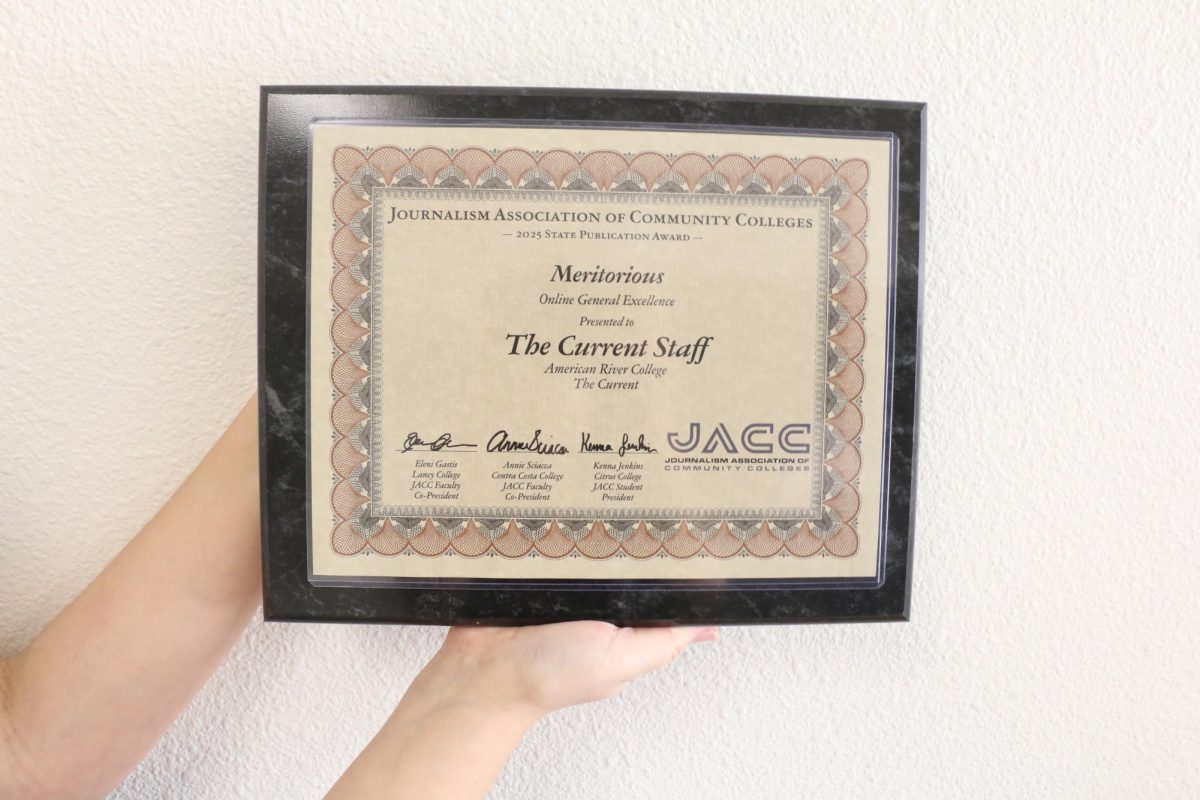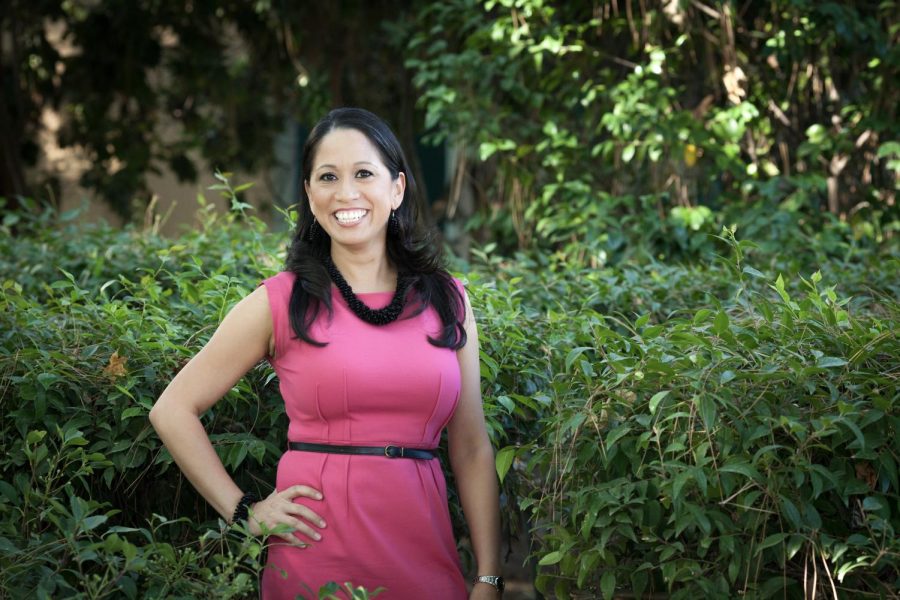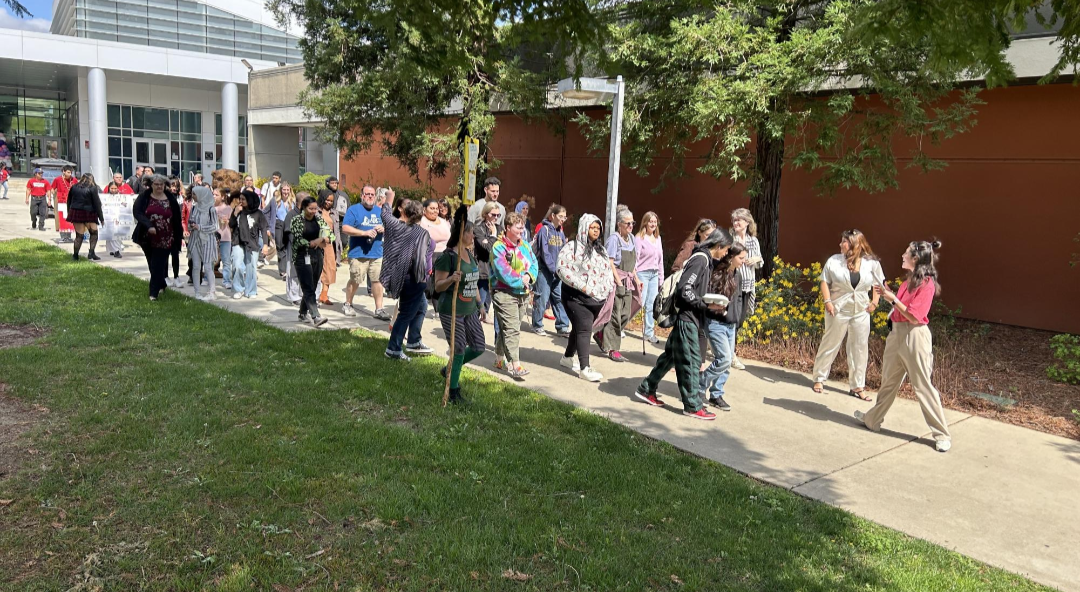When asked if he feels prepared to deal with violence in the classroom, ESL professor Paul Bracco seemed unsure.
“Prepared? I think physically I feel relatively prepared, and maybe instinctually, but as far as there are certain protocols I need to follow or certain things I need to know, I probably could use some more instruction,” said Bracco.
According to the Federal Bureau of Investigation’s website, “Crime in schools and colleges is … one of the most troublesome social problems in the Nation today.”
And American River College is no exception.
A woman was arrested on Aug. 26, the second day of the semester, for a string of alleged physical attacks that began in a classroom and left as many as seven victims.
The professor of the instrumental voice class where the incident began, Catherine Fagiolo, did not respond to a request for comment, but witness Josh Perkins, a student in the class, described Fagiolo’s response to the violence.
“The teacher honestly just said ‘You need to leave’ because before we knew that anything was wrong, (the suspect, Jonetta Hall) came in whacking people,” Perkins said. “There wasn’t really time to calm down, there was just time to say, ‘Hey, you need to leave’, because she had already hit someone.”
New ARC President Thomas Greene feels that the incident was handled appropriately.
“When the situation happened, and it seemed to happen out of the blue, honestly, the police were contacted immediately, and they arrived very quickly. They stopped the situation and intervened,” Greene said. “Folks responded exactly the way they were supposed to: stop the immediate threat, make sure everybody is safe.”
Greene feels that even with what he believes is a wide range of available training and awareness programs meant to instruct faculty on how to prevent and handle violent situations, the potential for violence on campus isn’t something that can be eliminated.
“This incident raises the question that no matter what you do, in terms of an awareness campaign, in terms of all the prevention activities that we can do, you can never prevent 100 percent of these incidents from occurring,” said Greene. “There’s always room for improvement, but with this incident I feel like the procedures in place and the resources were followed. There was a very appropriate response.”
ARC Public Information Officer Scott Crow detailed the available trainings, some of which, he added, are mandatory for faculty.
“There’s a variety of different training opportunities that are organized in different ways. For example, we have what’s called the Center for Teaching and Learning … The chief (of campus Police) is giving the talk on ‘Ready or Not’ on Thursday, which is a college hour event that everyone can go to,” Crow said.
“Then there’s the Los Rios Human Resources Department, which also provides additional training,” Crow said. “And then you have the Police Department, which in addition to providing police services, responding and so forth, they also provide training as well. So in addition to maybe what some people see, which is ‘OK, there’s a college hour event,’ there’s this other training that’s going on behind the scenes.”
Greene feels that partly due to the recession, students with mental illness may not be receiving necessary support, and consequently, the risk of such incidents is increasing.
“In the last several years, there has been the economic crisis and the recession, and that’s really impacted the state’s ability to provide social services, and that means mental health and support services and the ability for those to access those services,” said Greene. “As a consequence, there’s probably an increased number of individuals who aren’t receiving the support that they need and could benefit from.”
“What I’ve noticed is that there are increased incidents across all colleges as a consequence of our lack of statewide necessary support services,” continued Greene.
Greene has unique insight in this regard, having previously worked as a discipline officer prior to coming to ARC.
“I served as the discipline officer that investigated those incidents, also intervened personally, particularly in smaller colleges, where we didn’t have a police force,” said Greene. “So I’ve seen it from many different facets.”
“Often, situations occur because the individual is ill–they have mental health issues or so forth. Keeping the learning environment safe for everyone else, that’s number one. But two, how can we help that individual but ensure that this doesn’t happen again?” explained Greene.
Greene admits that providing “ongoing support” to mentally ill students is a challenge.
“We have counselors who can just provide some immediate support. It’s not therapy, but it’s just support. Then, our counselors and others have access to resources … in our community, and then connect students to that help,” said Greene. “The challenge is how to provide ongoing support for students, but in appropriate ways, with limited resources.”
“Oftentimes the behaviors, indications that a student is struggling, it’s to really help our faculty and staff to be aware of those, and to intervene in appropriate ways, but to intervene early, and connect students early, before it turns into a situation where the behaviors truly disrupt the learning environment and threaten the physical safety of our other students,” said Greene. “That’s an area where training helps, in terms of identification, and to create a culture that encourages that and is sensitive to that, and aware and proactive. So that’s going to be a continued focus of our efforts moving forward.”







